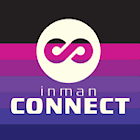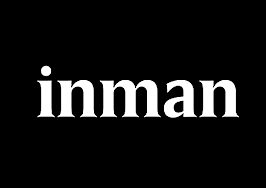What if you had your own personal assistant who could chat with prospective homebuyers or sellers on Facebook when you’re not at your computer?
An assistant who could qualify a lead, find out exactly what they need and then pass on all of that information to you. That way, you could follow up with exactly what a lead is looking for.
That would be pretty nice, right?
It would probably save you a lot of time and back-and-forth with leads too.
Well, believe it or not, you don’t need a personal assistant or a social media intern to do this.
You can actually automate this process with a Facebook Messenger chatbot.
What is a chatbot?
The most basic chatbot is just a sequence of questions that are sent to someone depending on how they respond to each one.
In other words, someone’s answer to each question will determine which question the chatbot asks next.
The video above walks through a demo of a chatbot that I built for real estate agents.
To get a better understanding of how a chatbot works, I recommend that you check that out first.
Here’s a quick look at how it works:
- Visitors click the “Send Message” button on your Facebook page (tip: your chat box will automatically appear when someone visits your page if you’re signed into Facebook)
- They click “Get Started” and enter into a conversation with your chatbot
- They answer questions, and your chatbot collects those answers
- Your chatbot emails that information to you so that you can follow up with exactly what a lead is looking for
Why build a chatbot?
First and foremost, a Facebook Messenger chatbot can save you time by eliminating the back-and-forth that typically goes on between you and a new lead.
Facebook Messenger is also the most popular messenger app in the U.S. with over 1.2 billion monthly active users.
Today, some people (millennials in particular) are just more comfortable with messaging a business’s Facebook page than they are with calling or emailing.
There’s no need to call a business when someone just has a quick question that’s not time-sensitive — and when people do want a timely response, they’ll usually choose a Facebook message over an email.
These days, we’ve become accustomed to using messenger apps because they help us save time.
They also reduce communication barriers between businesses and clients by providing a less formal way to ask questions.
What tools can you use to build a chatbot?
Unfortunately, there’s no way to create a Facebook Messenger chatbot without using a third-party tool.
Two tools I recommend are ManyChat and Chatfuel (the chatbot I built in the video above was built using Chatfuel).
For beginners, I strongly recommend ManyChat because it’s a little more user friendly (albeit less flexible/sophisticated).
Best practices for building a good chatbot
There are a couple of things to keep in mind when building a chatbot that will work correctly and require little-to-no maintenance.
1. Don’t pretend to be a human
A chatbot cannot communicate like humans do with each other (at least not today).
That means your chatbot should make it clear right away that someone is messaging a chatbot and not a real person.
This sets the person’s expectations about how they should interact with the chatbot.
2. Design your bot to last
Although it may be tempting to include current home listings or your latest blog post in your chatbot sequence, that’s generally not a good idea.
A well-designed chatbot doesn’t need to be constantly updated with new information — it just works all the time.
Keep it simple, and make sure that all the information or questions in your chatbot will stand the test of time.
3. Avoid dead ends
A “broken” chatbot is one that leads someone to a dead end, or worse, an infinite loop.
If either of these things happens, it creates a bad user experience and will probably leave your chatbot users frustrated.
To avoid this, make sure that every question your chatbot asks is linked to another question or answer.
At the end of a chatbot sequence, you should include an option to start a live conversation with the Facebook page admin to give someone a chance to exit the conversation and speak to a real person.
4. Use images or GIFs to make your chatbot more interactive
Consider adding images or GIFs to your chatbot sequence to make it more engaging. Check out the video above to see the GIFs I created to make my chatbot less boring.
Other ways to use your chatbot
There are a couple of other ways you can use your chatbot to communicate with leads.
1. Put your chatbot on your website
Most chatbot software will let you embed a button on your website that will allow a visitor to start a conversation with your chatbot.
This is a great alternative to a traditional website contact form.
2. Link to your chatbot on Facebook posts
Some tools like Chatfuel let you create a landing page for your chatbot that you can link to in your Facebook posts.
Chatfuel also lets you automatically send people into a conversation with your chatbot when they comment on a Facebook post.
3. Send broadcasts to your chatbot subscribers
Most chatbot tools let you ask people for permission to send them messages in the future (these are called “broadcasts).
This lets you build a list of people you can send “broadcast” messages to in the future (similar to building an email list).
This is great because messages sent using messenger apps have seen open rates of more than 80 percent compared to the average open rate of an email which is about 20 percent.
Let me know if there is something specific you want me to cover that relates to Facebook advertising!
Nate Dadosky is the owner of Nate Dadosky Marketing in Charlotte, North Carolina. Follow him on Facebook and Twitter.







